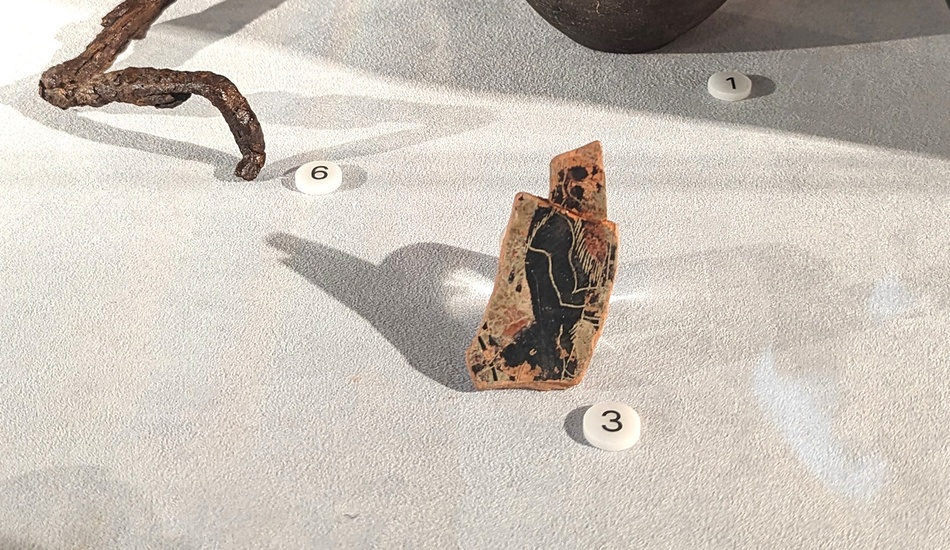
“Prato before Prato”, the archaeology section
The three showcases in this room are dedicated to the archaeology of the Prato area.
Through materials mainly associated with everyday activities, the short visit itinerary aims to illustrate some peculiar and recurring traits of the history of the settlement, closely linked to the natural and physical characteristics of the region: a varied environment, in contact between the plains and the mountains and with an abundance of water, which makes it an optimal environment for hunting, fishing and agriculture; a crossroads position between main roads, making it an important transit point especially for trans-Apennine connections; the presence of raw materials such as jasper and certain metals in Monteferrato.
The archaeological materials on display focus on five historical phases, from prehistory to late antiquity, and are chosen for their representativeness with regard to the aspects mentioned above. Numerous lithic tools from Galceti are evidence of the earliest settlement in the Palaeolithic period. A large millstone with its grindstone testifies to the establishment of a productive economy in the Neolithic period. In the same period a long-distance circulation of raw materials and finished products was also established, demonstrated by Sardinian or Liparian obsidian, Alpine green stone and ceramics decorated in southern or northern Italian styles.
The establishment of a large Bronze Age settlement at Gonfienti reflects important demographic growth and significant social transformations. The artefacts found testify to activities related to the consumption and preservation of food: cups, bowls often decorated with special grips or handles, drinking vessels, ollae and large food containers. Spinning and weaving activity is attested by spindles and loom weights. Made from bone there are numerous awls and arrowheads, from sandstone millstones and grindstones for flour production; from river pebbles, axes and hatchets.
The formation of the Etruscan settlement of Gonfienti dates back to the Late Archaic period, linked to the Etruscan expansion into the Po Valley area. Unearthed from domestic settings came tableware and kitchenware ceramics, using bucchero, earthenware, as well as purified and painted pottery and imported iron utensils (a key and a candlestick).
The Roman presence in the territory of Prato is linked to the road system and the agricultural exploitation of the land. From the building complex in the town of Gonfienti and from the production structure identified in Via Bresci, close to the Cassia-Clodia consular road, come fragments of African and Italic sealed pottery, oil lamps, bone needles and a hoard of coins that can be traced back to the entire Roman period, from the late Republican to the late Imperial age.
Last update: 28 october 2025, 10:43
